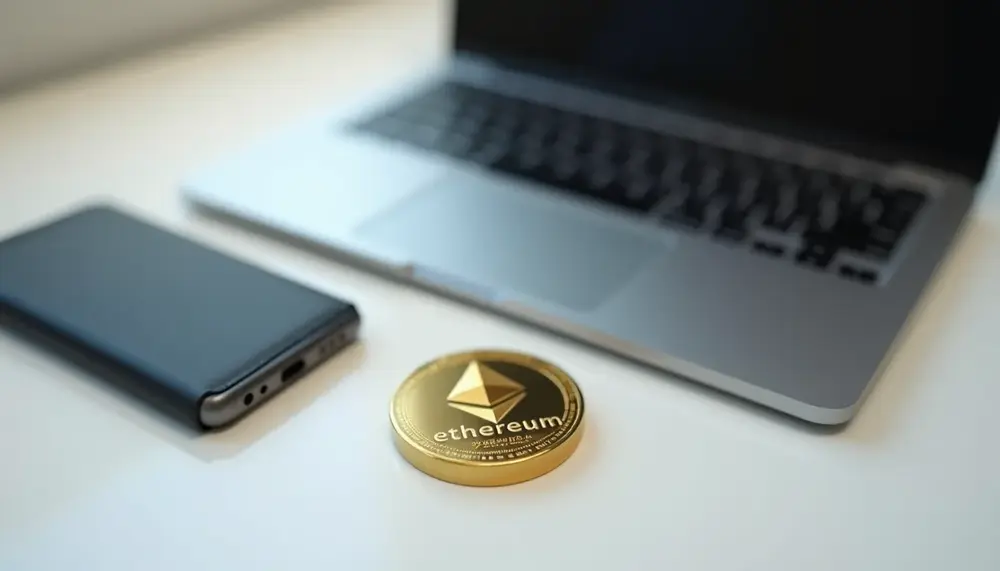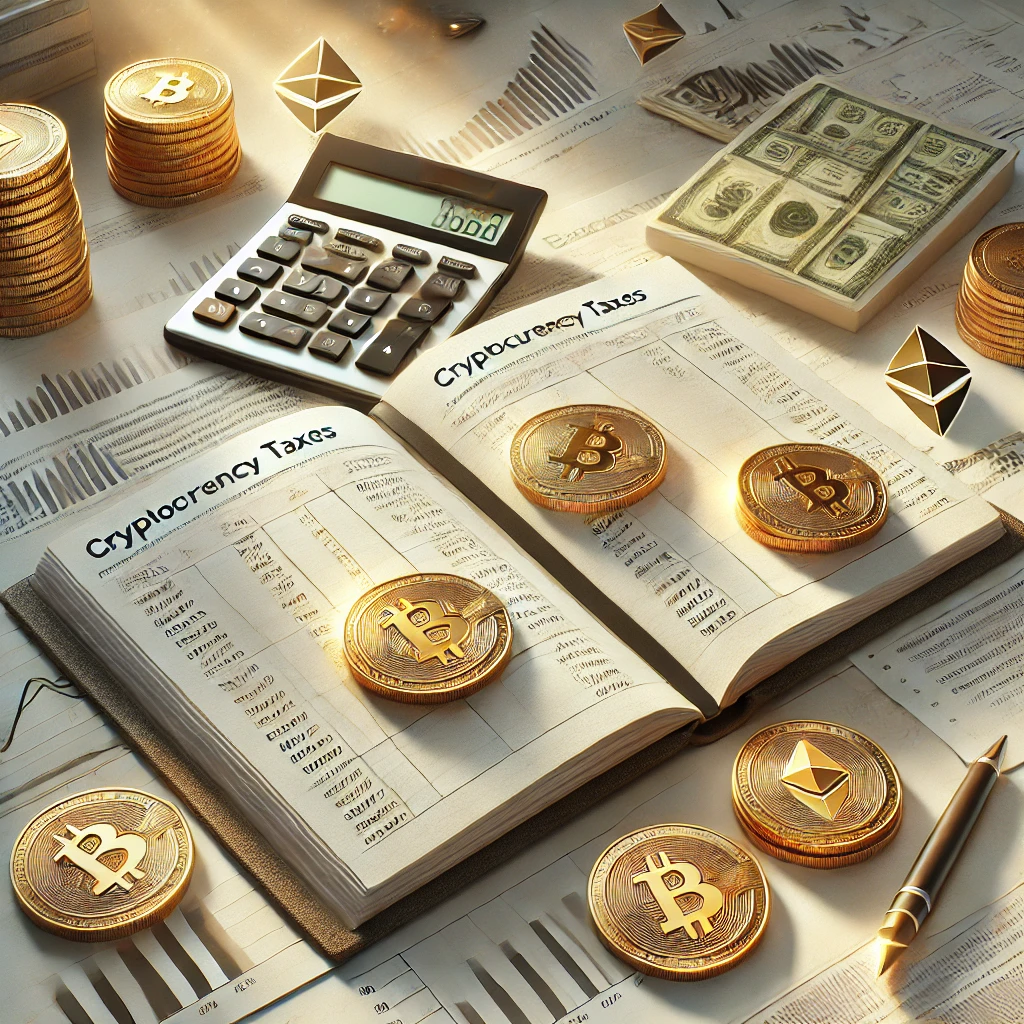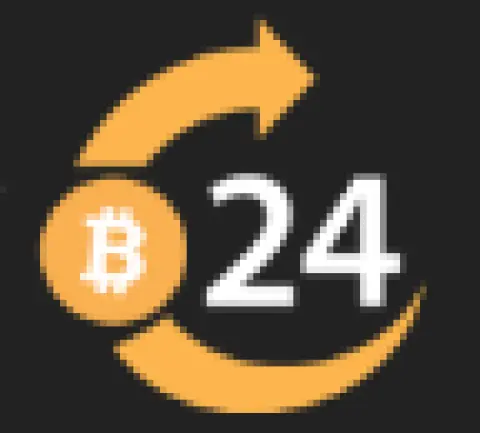Table of Contents:
Choosing the Best Ethereum Wallet: Key Criteria for Selection
Picking the right Ethereum wallet isn’t just about grabbing the first app you see in the app store. It’s a nuanced decision, especially if you’re planning to dive deep into the Ethereum ecosystem. So, what really matters when you’re on the hunt for the best wallet? Here’s a no-nonsense checklist, shaped by real-world experience and current best practices.
-
Self-Custody and Key Management
If you want true control, choose a wallet that lets you hold your own private keys. This means your assets are yours alone—no centralized entity can freeze or seize them. Look for wallets that generate keys locally and never transmit them online. -
Multi-Chain and Token Support
The best Ethereum wallets aren’t just for ETH. They should handle ERC-20 tokens, NFTs, and ideally even assets from other blockchains. If you’re planning to interact with DeFi or NFT platforms, this flexibility is non-negotiable. -
Security Audits and Open Source Code
Has the wallet undergone third-party security audits? Is the code open source? These factors boost transparency and allow the community to spot vulnerabilities before hackers do. Never underestimate the value of a wallet with a proven security track record. -
Seamless dApp Integration
If you’re itching to try out DeFi, staking, or NFT marketplaces, your wallet should offer smooth dApp connectivity. WalletConnect, built-in browsers, or direct Web3 support make a world of difference for usability. -
Recovery and Backup Options
Let’s be honest—losing access to your wallet is a nightmare. Top wallets offer robust backup methods, like seed phrases or hardware integrations, so you can recover your funds if your device goes missing. -
User Experience and Accessibility
A wallet might be secure, but if it’s a pain to use, you’ll probably abandon it. Prioritize intuitive interfaces, clear instructions, and accessibility features. Bonus points for multilingual support and responsive customer service. -
Regular Updates and Active Development
The Ethereum landscape changes fast. A wallet that’s updated regularly keeps you protected against new threats and ensures compatibility with the latest protocols and tokens.
In short, don’t settle for less. The best Ethereum wallet for you is the one that balances bulletproof security, flexibility, and a user experience that doesn’t make you want to pull your hair out. Consider these criteria as your personal checklist before making your pick.
Top Ethereum Wallets Compared: Features and Use Cases
Ethereum wallets come in many flavors, each with its own set of features and ideal use cases. Here’s a focused comparison of the top contenders, so you can see which wallet might actually fit your needs—whether you’re a casual NFT collector, a DeFi enthusiast, or just someone who wants to keep things simple.
-
MetaMask
Browser extension & mobile app
MetaMask is a go-to for Web3 users, thanks to its seamless dApp integration and robust NFT support. It’s especially handy for those who want to interact with DeFi protocols or experiment with Ethereum testnets. Frequent updates and a massive user base make it a reliable choice for both beginners and power users. -
Ledger Live (with Ledger hardware)
Hardware wallet + companion app
For anyone who puts security above all else, Ledger hardware wallets paired with Ledger Live offer cold storage for ETH and tokens. The companion app now supports staking and NFT management, making it more versatile than ever. It’s a top pick for long-term holders and those with significant assets. -
Trust Wallet
Mobile app
Trust Wallet shines with its multi-chain support and built-in DEX (decentralized exchange) features. You can buy, swap, and stake a wide range of assets, all from your phone. Its user-friendly interface appeals to those who want an all-in-one solution without sacrificing ease of use. -
Rainbow
Mobile app
Rainbow is tailored for Ethereum purists. It offers a vibrant, intuitive interface with deep NFT and DeFi integration. Social recovery and wallet customization options set it apart, making it ideal for users who want both style and substance. -
Argent
Mobile app
Argent takes a unique approach with smart contract wallets, offering features like daily transfer limits and social recovery. Its focus on DeFi access and gasless transactions is a game-changer for those who want security and convenience rolled into one.
Each wallet brings something different to the table. MetaMask is the workhorse for dApp explorers, Ledger is the fortress for security-minded users, Trust Wallet is the Swiss Army knife for mobile-first investors, Rainbow is for the NFT and DeFi crowd who appreciate design, and Argent is the innovator for those who want next-level security and usability. Your choice should reflect your habits, priorities, and appetite for risk—there’s no one-size-fits-all, but there’s definitely a best fit for you.
Essential Security Features in Ethereum Wallets
Security is the backbone of any Ethereum wallet worth its salt. Beyond basic private key storage, modern wallets now offer a toolkit of advanced features designed to keep your assets safe from both digital and human threats. Let’s dig into the must-have security layers you should look for—because, honestly, the stakes are too high for shortcuts.
-
Biometric Authentication
Face ID, fingerprint scanning, or even voice recognition—these features make sure only you can access your wallet, even if someone gets hold of your device. -
Transaction Confirmation Prompts
Every outgoing transaction should trigger a clear, detailed prompt for you to review. This step helps prevent accidental transfers and makes phishing attacks much harder to pull off. -
Phishing and Malicious dApp Warnings
Some wallets actively scan dApp URLs and smart contracts for suspicious activity, alerting you before you connect. This is crucial as phishing sites and scam contracts are rampant in the crypto space. -
Hardware Wallet Integration
Top-tier wallets let you connect to hardware devices for signing transactions. This means your private keys never touch the internet, even when you’re interacting with dApps or making trades. -
Multi-Signature Support
For those managing larger sums or shared accounts, multi-signature wallets require multiple approvals before funds move. This adds a powerful layer of protection against theft or mistakes. -
Session Timeouts and Auto-Lock
Automatic logout after periods of inactivity reduces the risk of unauthorized access if you forget to close your wallet or step away from your device. -
On-Device Encryption
All sensitive data, including private keys and seed phrases, should be encrypted locally. This means even if your device is compromised, your wallet data remains unreadable without your credentials.
These features aren’t just bells and whistles—they’re essential for protecting your digital assets in a world where threats evolve daily. Always double-check that your chosen wallet includes several of these protections, and don’t hesitate to prioritize security over convenience. Your future self will thank you.
How to Store, Send, and Receive Ethereum Securely
Storing, sending, and receiving Ethereum isn’t rocket science, but doing it securely requires a bit of know-how and, honestly, a healthy dose of caution. Here’s how to handle your ETH like a pro—no stress, no nasty surprises.
-
Storing Ethereum Safely
Always back up your recovery phrase and keep it offline—think pen and paper, not screenshots or cloud notes. Consider splitting your funds: keep a small amount in a “hot” wallet for daily use, and the bulk in a “cold” wallet that’s never connected to the internet. For extra peace of mind, use wallets that let you set spending limits or require extra authentication for large transfers. -
Sending Ethereum Without Risk
Double-check the recipient’s address—seriously, one typo and your ETH is gone forever. Use the wallet’s built-in address book or QR code scanner to avoid mistakes. If you’re sending a large amount, do a small test transaction first. Be wary of transaction fees: during network congestion, fees can spike, so check the estimated cost before you hit send. -
Receiving Ethereum Securely
Only share your public address, never your private key or recovery phrase. For added safety, generate a new receiving address for each transaction if your wallet supports it. After receiving ETH, verify the transaction on a block explorer—don’t just trust a notification or email.
One last tip: stay alert for phishing attempts. Always access your wallet from official sources and bookmark the correct URLs. A little vigilance goes a long way when you’re moving real value on the blockchain.
NFT and Multi-Asset Support: Expanding Your Ethereum Wallet
Expanding your Ethereum wallet’s capabilities isn’t just a matter of storing ETH anymore. The modern crypto landscape demands support for a variety of assets, from digital collectibles to tokens on entirely different blockchains. Let’s break down how NFT and multi-asset support can transform your wallet into a powerful, all-in-one hub.
-
Native NFT Management
Top wallets now offer dedicated NFT galleries, letting you view, organize, and showcase ERC-721 and ERC-1155 tokens with full metadata and image previews. This means you can track your digital art, gaming items, or collectibles directly in your wallet—no third-party tools needed. -
Multi-Chain Asset Integration
The best wallets don’t stop at Ethereum. They enable you to add and manage assets from other blockchains like Polygon, Binance Smart Chain, or even Solana. This multi-chain approach opens up cross-chain swaps, bridges, and broader DeFi opportunities, all from a single interface. -
Token Customization and Discovery
Advanced wallets allow you to manually add custom tokens by entering contract addresses, so you’re not limited to pre-listed assets. Some even feature token discovery tools, helping you find and track new coins or NFTs as soon as they hit the market. -
Batch Actions and Bulk Transfers
For users managing large portfolios or multiple NFTs, batch send and bulk management features are a game-changer. You can transfer several assets in one go, saving time and reducing transaction fees. -
Portfolio Visualization
Modern wallets increasingly include visual dashboards, showing your holdings across different asset types and networks. This helps you monitor performance, spot trends, and make informed decisions without juggling multiple apps.
With these features, your Ethereum wallet becomes much more than a simple storage tool—it’s a launchpad for creativity, investment, and cross-chain exploration. If you’re serious about digital assets, robust NFT and multi-asset support isn’t just nice to have; it’s essential for staying ahead in the ever-evolving crypto world.
Seamless dApp and Web3 Integration Explained
Seamless dApp and Web3 integration is what turns a regular Ethereum wallet into a true gateway to the decentralized universe. But what does “seamless” really mean in practice? It’s all about how easily and securely you can connect, interact, and transact with decentralized applications—without unnecessary friction or risk.
-
Instant Wallet Connectivity
Modern wallets let you connect to dApps with a single click, often using protocols like WalletConnect or built-in Web3 browsers. No copy-pasting of addresses or jumping through hoops—just scan a QR code or tap a button, and you’re in. -
Permission Controls
Advanced integration means you can grant or revoke dApp permissions at any time. You decide which apps can access your wallet, what data they see, and for how long—giving you granular control over your privacy and security. -
Real-Time Transaction Feedback
When interacting with dApps, you get immediate, detailed feedback on transaction status. Pending, confirmed, or failed—your wallet keeps you updated so you’re never left guessing what’s happening with your funds. -
Multi-dApp Session Management
The best wallets allow you to manage multiple dApp sessions simultaneously. This means you can interact with a DeFi protocol, an NFT marketplace, and a blockchain game—all without disconnecting or reauthorizing each time. -
Integrated Signing and Gas Estimation
Signing transactions directly within the wallet, with clear breakdowns of gas fees and contract actions, helps you avoid surprises. You see exactly what you’re approving, making complex dApp interactions safer and more transparent.
With these integration features, your Ethereum wallet becomes a command center for exploring the Web3 world. No more clunky interfaces or risky guesswork—just smooth, secure access to the full spectrum of decentralized possibilities.
User Experience: Setup, Interface, and Customer Support
Setting up an Ethereum wallet should feel less like solving a puzzle and more like opening a new app on your phone. The best wallets now offer onboarding flows that guide you step-by-step, using plain language and clear visuals. Many provide in-app tooltips, progress bars, and even interactive tutorials—so you’re never left scratching your head, wondering what to do next.
-
Interface Design
A well-designed wallet interface is uncluttered, responsive, and adapts smoothly to both desktop and mobile screens. Top wallets use color coding, icons, and contextual menus to make navigation intuitive. Customizable dashboards and dark mode options are increasingly common, catering to user preferences and accessibility needs. -
Localization and Accessibility
Leading wallets now support multiple languages and offer accessibility features like screen reader compatibility and adjustable font sizes. This ensures that users from diverse backgrounds and abilities can interact with their assets confidently. -
Customer Support Channels
Fast, knowledgeable support is a must. Many wallets provide 24/7 live chat, detailed help centers, and active community forums. Some even offer guided troubleshooting or in-app ticket submission, reducing wait times and frustration. -
Continuous Feedback Loops
User feedback isn’t just collected—it’s acted upon. Frequent updates, user surveys, and transparent changelogs show that wallet teams are listening and evolving their products based on real-world needs.
Ultimately, a wallet’s user experience can make or break your journey in the Ethereum ecosystem. When setup is painless, the interface feels natural, and support is just a click away, you’re free to focus on what matters: exploring, transacting, and growing your digital assets.
Case Study: Setting Up and Using MetaMask for Ethereum
MetaMask has become almost synonymous with Ethereum access, but what’s it really like to set up and use in practice? Here’s a hands-on look at the process, quirks, and unique strengths—warts and all.
Setup Experience
- Download the MetaMask extension from the official website or your browser’s add-on store. Installation is quick, with clear prompts and minimal jargon.
- During wallet creation, MetaMask generates a 12-word secret recovery phrase. The interface requires you to confirm the phrase in the correct order, ensuring you’ve actually written it down. There’s a subtle but effective nudge: you can’t skip this step.
- Once inside, you’re greeted by a simple dashboard showing your ETH balance and recent activity. There’s a persistent reminder to back up your recovery phrase—MetaMask doesn’t let you forget what’s important.
Using MetaMask for Ethereum
- Adding custom tokens is straightforward: paste the contract address, and MetaMask fetches the details automatically. No manual entry of decimals or symbols required for most assets.
- Switching between Ethereum mainnet and testnets is just a couple of clicks. This is especially handy for developers or anyone wanting to experiment without risking real funds.
- MetaMask supports direct integration with popular NFT marketplaces and DeFi platforms. When connecting, a clear pop-up appears, showing the permissions requested by the dApp—giving you a chance to review before approving.
- Transaction details are transparent: you see gas estimates, network status, and can even customize fees for speed or savings. If a transaction fails, MetaMask provides a reason and links to block explorers for further troubleshooting.
- For privacy-conscious users, MetaMask offers advanced settings to limit data sharing and even lets you connect via custom RPC endpoints for more control over your network experience.
In real-world use, MetaMask stands out for its balance of simplicity and power. It’s approachable for newcomers but offers enough depth for seasoned Ethereum users to fine-tune their experience. The setup is fast, the learning curve is gentle, and the ecosystem compatibility is second to none.
Maximizing Earnings: Staking, Swapping, and DeFi in Ethereum Wallets
Ethereum wallets have evolved far beyond simple storage—they now unlock real earning potential for users willing to explore staking, swapping, and DeFi. Here’s how you can make your wallet work harder for you, without getting lost in the weeds.
-
Staking ETH Directly from Your Wallet
Many wallets now offer native staking features, letting you participate in Ethereum’s proof-of-stake consensus and earn rewards without leaving the app. Some provide “liquid staking,” issuing a tradable token that represents your staked ETH, so you can keep earning yield while still having liquidity. Always check if your wallet supports direct staking or integrates with reputable staking providers—fees, lock-up periods, and minimum amounts can vary. -
Swapping Tokens Instantly
Built-in swap functions let you exchange ETH and ERC-20 tokens at the tap of a button. Advanced wallets aggregate rates from multiple decentralized exchanges (DEXs), ensuring you get the best price with minimal slippage. Some even offer “frontrun protection,” reducing the risk of your trade being exploited by bots. Always review swap fees and network congestion before confirming. -
Accessing DeFi Protocols and Yield Opportunities
Direct integration with DeFi platforms means you can lend, borrow, or provide liquidity without leaving your wallet. Some wallets curate lists of vetted protocols, flagging potential risks and showing real-time APYs. Look for features like portfolio tracking for your DeFi positions, automated yield optimization, and clear breakdowns of protocol fees. This makes it easier to spot the best opportunities and manage risk. -
Participating in Airdrops and Governance
Certain wallets notify you about eligible airdrops or governance votes for tokens you hold. This lets you claim new assets or participate in shaping the future of DeFi protocols—often with just a few taps.
By leveraging these advanced features, you’re not just holding Ethereum—you’re putting your assets to work. The right wallet can turn passive balances into active, compounding rewards, all while keeping you in control of your funds and your strategy.
Advanced Tools: Portfolio Tracking, Plugins, and Developer Features
Ethereum wallets have become sophisticated platforms, offering a suite of advanced tools that go well beyond basic asset management. For users seeking granular control and deeper insights, these features can be game-changers.
-
Comprehensive Portfolio Tracking
Some wallets now include built-in analytics dashboards that aggregate your holdings across multiple chains and wallets. You get real-time valuations, historical performance charts, and asset allocation breakdowns—making it easier to spot trends or rebalance with confidence. Advanced filters let you track everything from obscure tokens to complex DeFi positions, all in one place. -
Plugin and Extension Ecosystems
Leading wallets are opening up to third-party plugins, allowing users to customize their experience. Whether it’s integrating a tax reporting tool, connecting to a hardware wallet, or adding new DeFi protocol support, plugins enable modular upgrades without waiting for official updates. This flexibility is especially valuable for power users and professionals. -
Developer and Power User Features
For builders and tinkerers, some wallets offer developer consoles, direct contract interaction interfaces, and support for custom RPC endpoints. These tools make it possible to test dApps, debug transactions, or interact with smart contracts directly—no need for separate developer environments. Access to raw transaction data and logs empowers users to audit activity and troubleshoot with precision. -
Automation and Alerts
Advanced wallets let you set up custom notifications for price movements, incoming transactions, or protocol events. Some even support automated actions, like rebalancing or swapping when certain conditions are met. This level of automation can save time and help you react faster to market changes.
With these advanced tools, Ethereum wallets are evolving into full-fledged financial dashboards and development environments. Whether you’re a data-driven investor, a developer, or simply someone who wants more control, these features put powerful capabilities right at your fingertips.
Summary: Picking the Right Ethereum Wallet for Your Needs
Summary: Picking the Right Ethereum Wallet for Your Needs
Choosing an Ethereum wallet is ultimately about aligning its unique capabilities with your personal goals and usage patterns. Rather than defaulting to the most popular option, consider how your own habits and future plans shape what’s truly essential.
-
Assess Your Activity Level
If you anticipate frequent interaction with new protocols or assets, prioritize wallets that offer fast onboarding for emerging tokens and seamless updates to support the latest Ethereum standards. -
Evaluate Ecosystem Compatibility
Some wallets offer exclusive partnerships or early access to specific dApps, NFT launches, or staking pools. If you’re eyeing a particular ecosystem, check for wallet-native perks or integrations that could give you an edge. -
Factor in Recovery and Succession Planning
Consider wallets that support advanced inheritance features or multi-party access, especially if you’re managing significant value or planning for long-term asset stewardship. -
Weigh Privacy Customization
For users concerned about data exposure, look for wallets with granular privacy controls—such as customizable network endpoints, stealth address generation, or local transaction signing without third-party relays. -
Consider Community and Governance
Wallets with active user communities or governance tokens may offer a say in future development, bug bounties, or feature prioritization. This can be a meaningful differentiator if you want to help shape the tools you rely on.
Ultimately, the right Ethereum wallet is the one that adapts to your evolving needs, not the other way around. Stay flexible, keep an eye on new developments, and don’t hesitate to migrate if a better fit emerges. The Ethereum ecosystem rewards those who remain curious and proactive.
Experiences and Opinions
Choosing an Ethereum wallet can be daunting. Many users express confusion about the various options available. Some prefer mobile wallets like Argent for their user-friendly design. Others opt for hardware wallets like Ledger Nano X for enhanced security.
Security is a top concern for many. Users frequently highlight the importance of self-custody of private keys. A common issue is losing access to wallets due to forgotten seed phrases. Therefore, users emphasize the need for secure backup options. Wallets that offer recovery phrases receive praise for their safety features.
In forums, discussions often center around the ease of use. MetaMask is frequently mentioned as a go-to wallet for interacting with decentralized applications (dApps). Users appreciate its seamless integration with various platforms. However, some report issues with transaction speeds during high network congestion.
Fees can also be a deciding factor. Many users compare the costs associated with different wallets. Some wallets charge higher fees for transactions, while others offer lower rates but may compromise on features. Users seeking to trade frequently recommend wallets that minimize transaction fees.
Compatibility with NFTs and DeFi platforms is another critical point. Users interested in collecting NFTs often gravitate towards wallets like Rainbow. This wallet is praised for its focus on design and usability, making it ideal for NFT enthusiasts. Conversely, users who engage in DeFi activities prefer wallets that support staking and lending, often mentioning Trust Wallet for its robust features.
In terms of customer support, experiences vary widely. Some users are frustrated by slow response times from wallet providers. They recommend choosing wallets with good customer service reputations. Reviews from TokenTax highlight the importance of evaluating customer service when selecting a wallet.
Mobile wallets have gained traction due to their convenience. Users can manage funds on the go and appreciate features like biometric security. However, concerns about online vulnerabilities persist. Some users still prefer the offline security of hardware wallets for storing larger amounts of Ethereum.
Overall, users emphasize the need for a balance between security and usability. Many suggest experimenting with different wallets to find the right fit. The best wallet ultimately depends on individual needs and preferences.
For those new to Ethereum, starting with an intuitive wallet like Exodus may be advisable. Its user-friendly interface helps beginners navigate the crypto space with ease. Meanwhile, experienced users might lean towards wallets like Trezor or Ledger for their advanced security features.
In conclusion, selecting an Ethereum wallet requires careful consideration. Users must evaluate their priorities, whether they value security, ease of use, or specific functionalities. Reliable resources like Tangem provide further insights into wallet options, helping users make informed decisions.
FAQ About Ethereum Crypto Wallets
What is an Ethereum crypto wallet and what does it do?
An Ethereum crypto wallet is a secure digital tool that allows you to store, send, receive, and manage Ethereum (ETH) and Ethereum-based tokens such as ERC-20 and NFTs. It also serves as a gateway to decentralized applications (dApps) and the broader Web3 ecosystem.
How can I keep my Ethereum wallet secure?
Keep your Ethereum wallet secure by ensuring your private keys or recovery phrase are stored offline and never shared. Choose wallets with features like biometric authentication, transaction confirmation prompts, phishing protection, and hardware wallet integration. Always download wallet apps from official sources.
What are the main types of Ethereum wallets?
The main types are hardware wallets (physical devices for maximum security), software wallets (mobile or desktop apps for convenience), and web wallets (browser-based for fast dApp access). Each type offers different levels of security and accessibility to suit various user needs.
Can I manage NFTs and other crypto assets with my Ethereum wallet?
Yes, most modern Ethereum wallets allow you to view, send, receive, and organize NFTs and a wide range of tokens beyond ETH. Many also support assets from other blockchains and display your holdings in a visual interface or gallery.
What features should I look for when choosing an Ethereum wallet?
Look for self-custody (you control your private keys), multi-chain and NFT support, robust security, user-friendly design, dApp integration, backup and recovery options, and responsive customer support. Advanced users may also want portfolio tracking, DeFi access, and plugin extensions.











